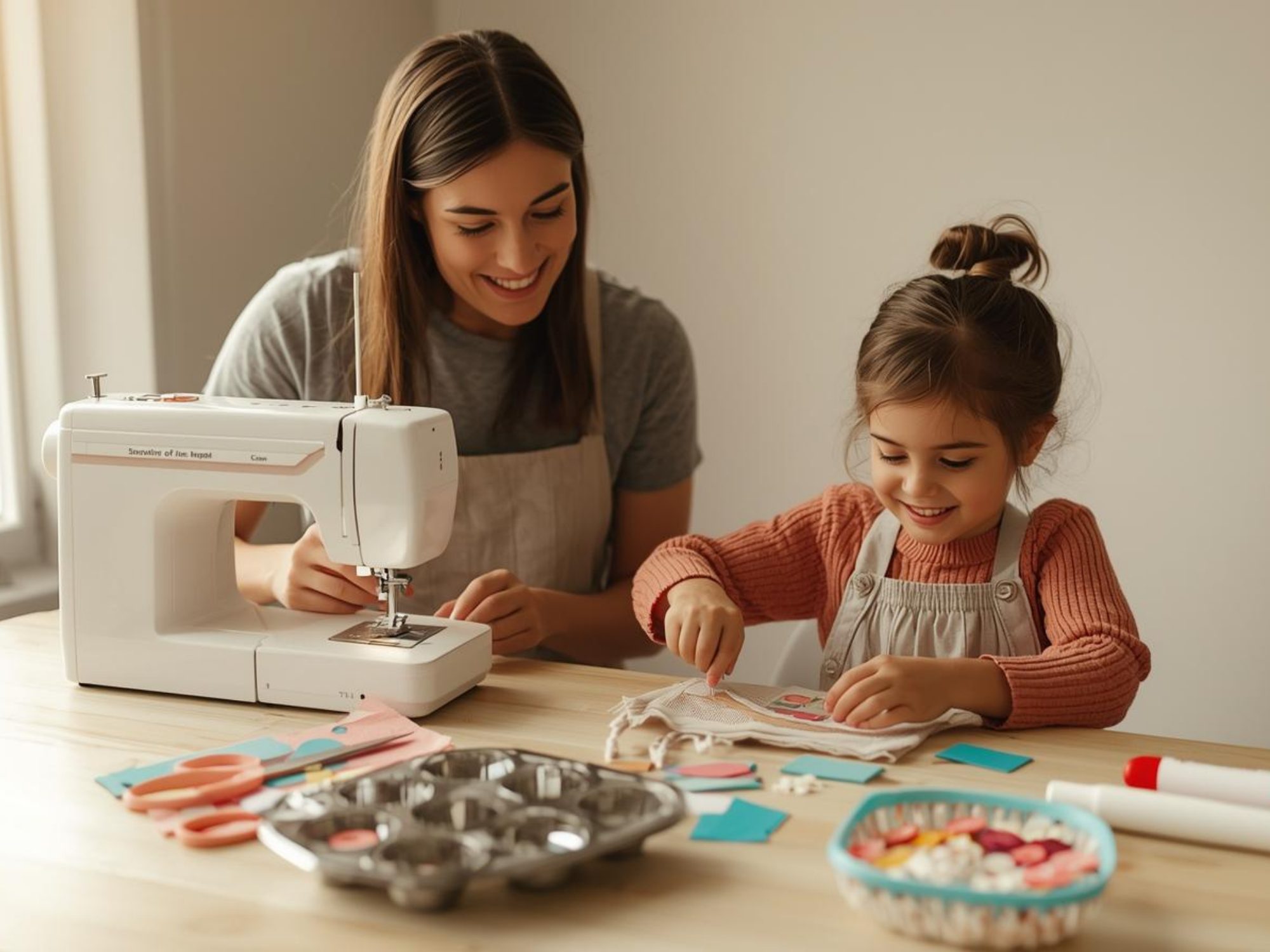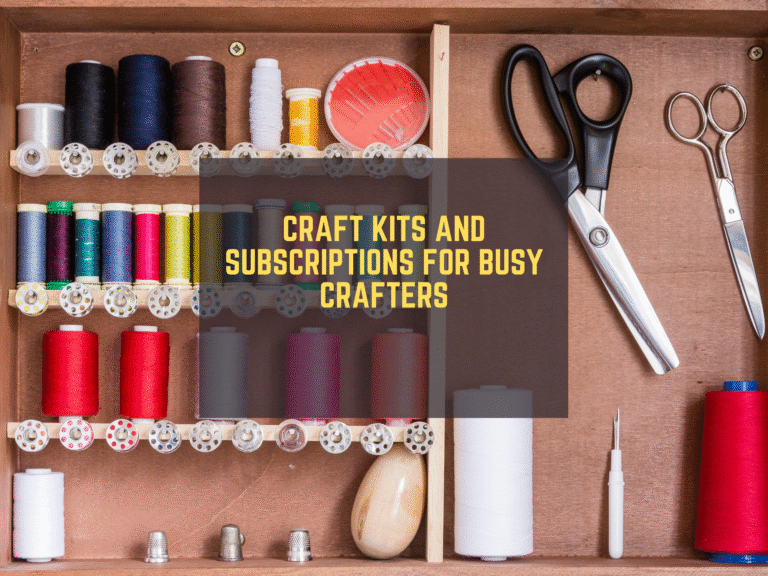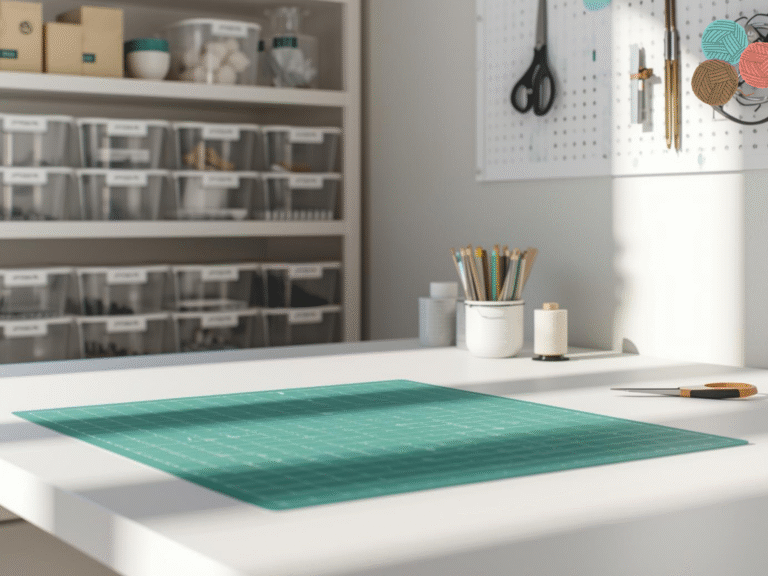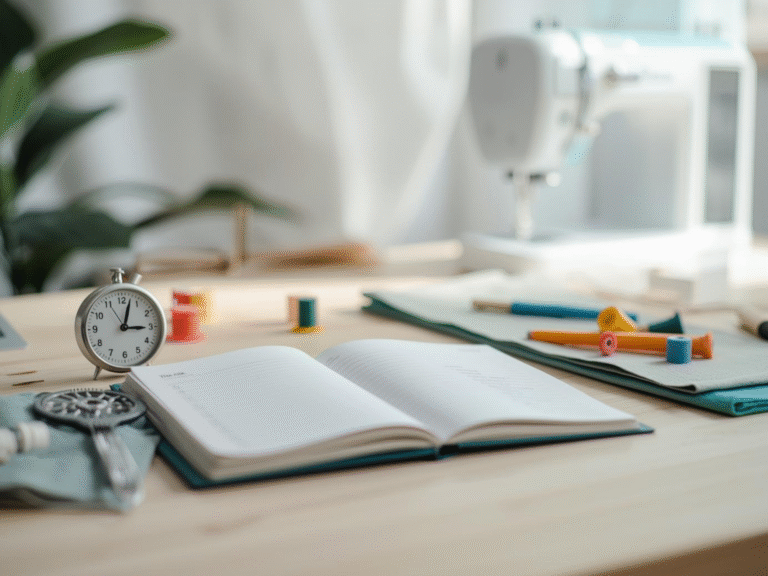When you love to sew or craft, it can be hard to find time. Kids need snacks, help, and hugs. I have been there. The good news is you do not have to choose between your projects and your family. With a few small changes, you can enjoy crafting with kids and still make real progress on your work. You can set up a small craft corner, give a child a mini version of your project, or plan short sessions that fit your day. When you invite your child to join, you feed their creativity and keep your own spark alive.
Why crafting together works
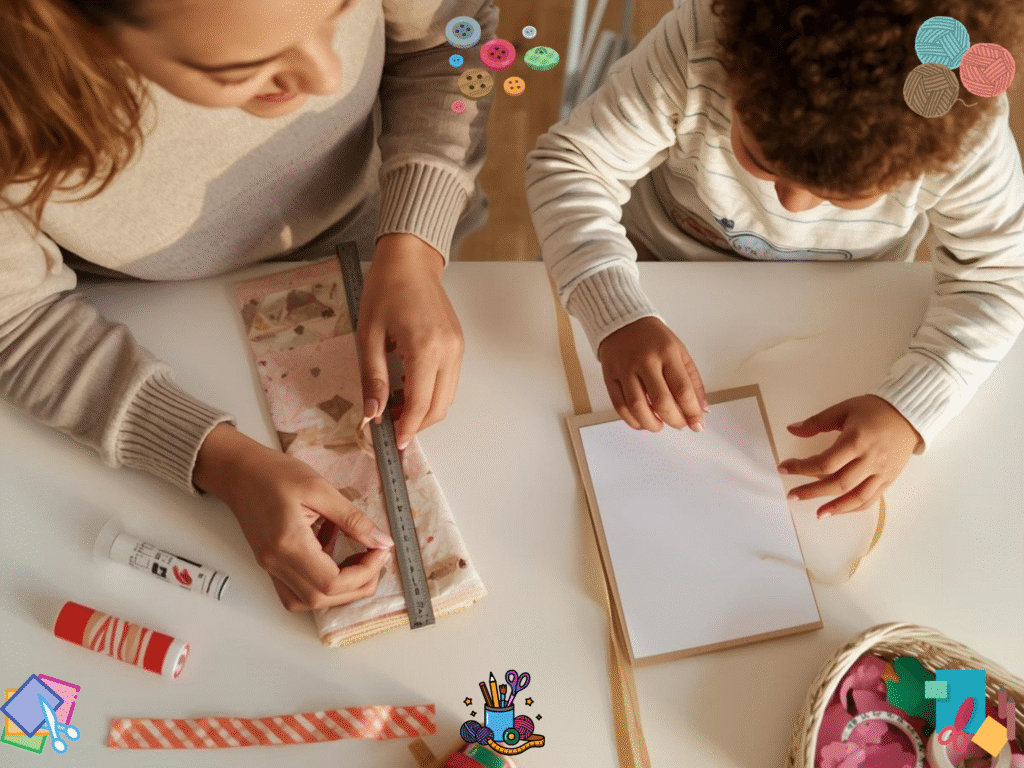
Children want to be near you. When you make art side by side, they get attention and you get time to create. Process art also helps kids grow. It builds language, focus, and problem solving. If you want ideas for open-ended activities at home, see the National Association for the Education of Young Children’s guides to process art.
A simple routine for busy days
Use this easy three-step plan.
- Pick a 20 minute block.
- Choose one adult project and one child task.
- End with a two minute tidy.
Short windows add up. On some days, you might only cut fabric for a pouch or pin a hem. That still counts. Your child can glue paper shapes, thread big beads, or stamp patterns. PBS Parents has quick craft videos and seasonal ideas if you need fast prompts.
Set up a kid craft corner
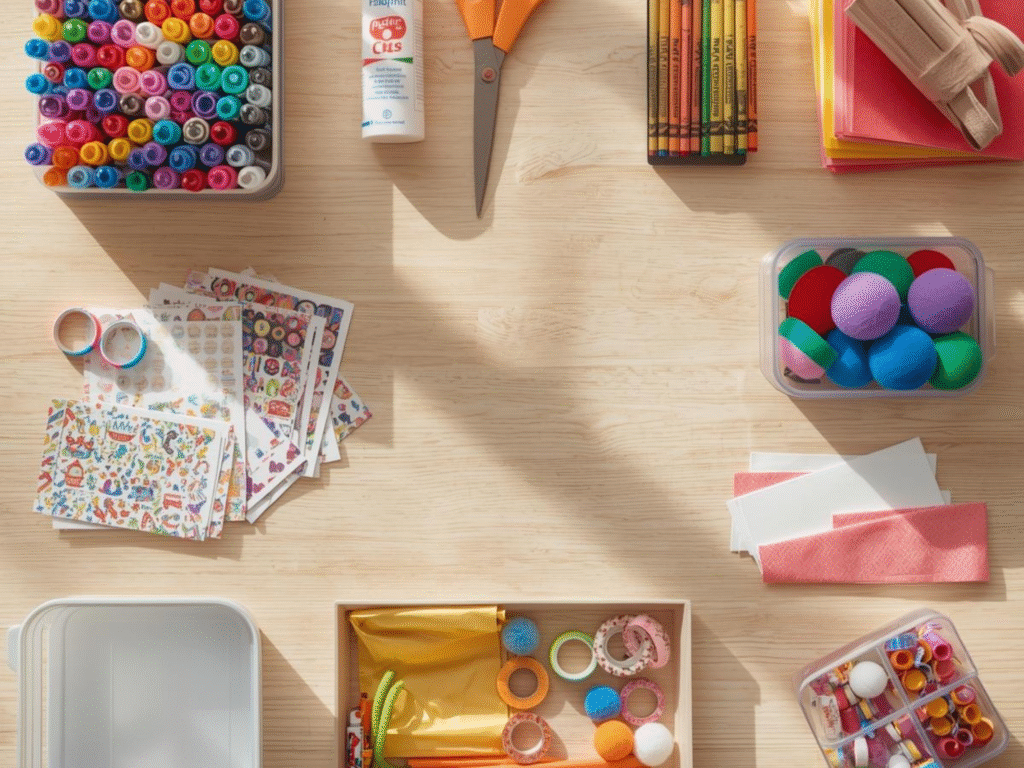
A small, steady setup keeps kids busy and calm. You do not need a full room. A tray, a bin, or a rolling cart works.
- Low table or tray
- Washable markers and crayons
- Safety scissors for kids
- Glue stick and paper scraps
- Stickers, washi tape, pom poms, pipe cleaners
- Small bin for trash and a damp cloth for hands
Keep your rules simple. Sit while cutting. Ask before using glue. Put caps on markers. Choose non-toxic supplies and check labels. Many art materials show an ASTM D-4236 statement to signal a toxicologist has reviewed them. Learn more from the U.S. Consumer Product Safety Commission.
The “mirror my project” method
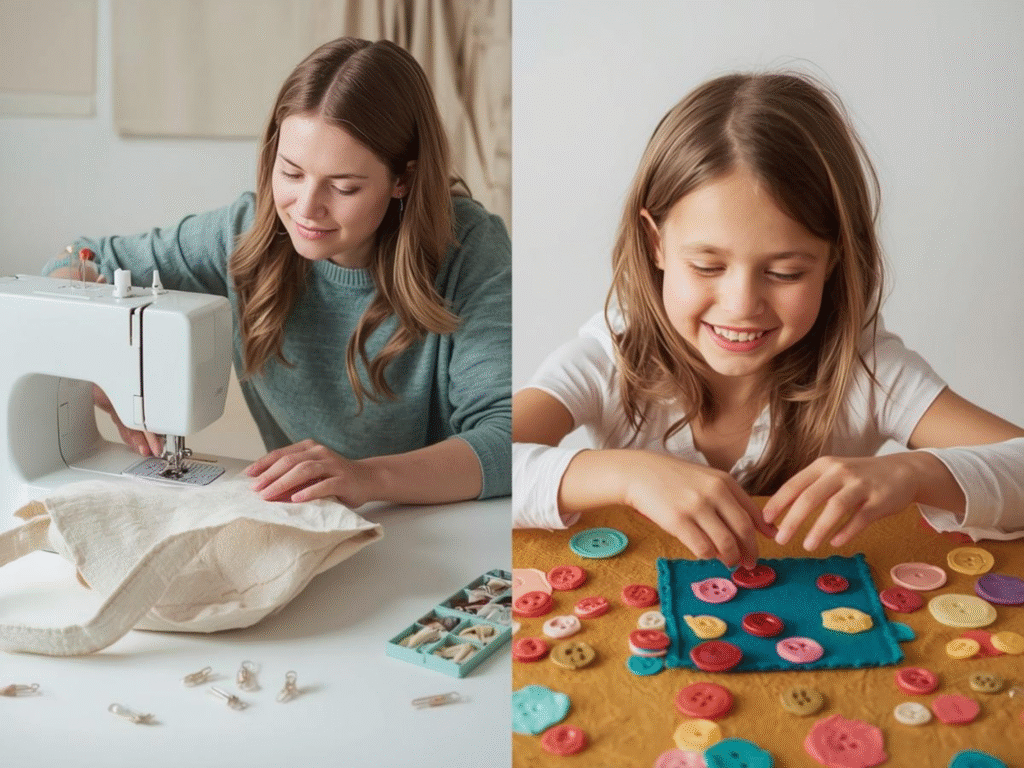
Kids love to copy what you do. This is powerful and kind. It also supports brain growth because you and your child trade small back-and-forth actions, known as serve and return. Harvard’s Center on the Developing Child explains how this simple pattern supports language and social skills.
Here is how to mirror your work:
- If I am sewing a tote, my child decorates a felt rectangle with fabric stickers and buttons.
- If I am cutting cotton squares, my child punches paper squares with a craft punch.
- If I am measuring a hem, my child uses a ruler to measure yarn or ribbon and tapes it onto paper.
- If I am planning a layout, my child sorts buttons by color into muffin cups.
You lead. Your child copies in a safe, simple way. You both feel proud at the end.
Ten easy craft ideas for children that pair with sewing
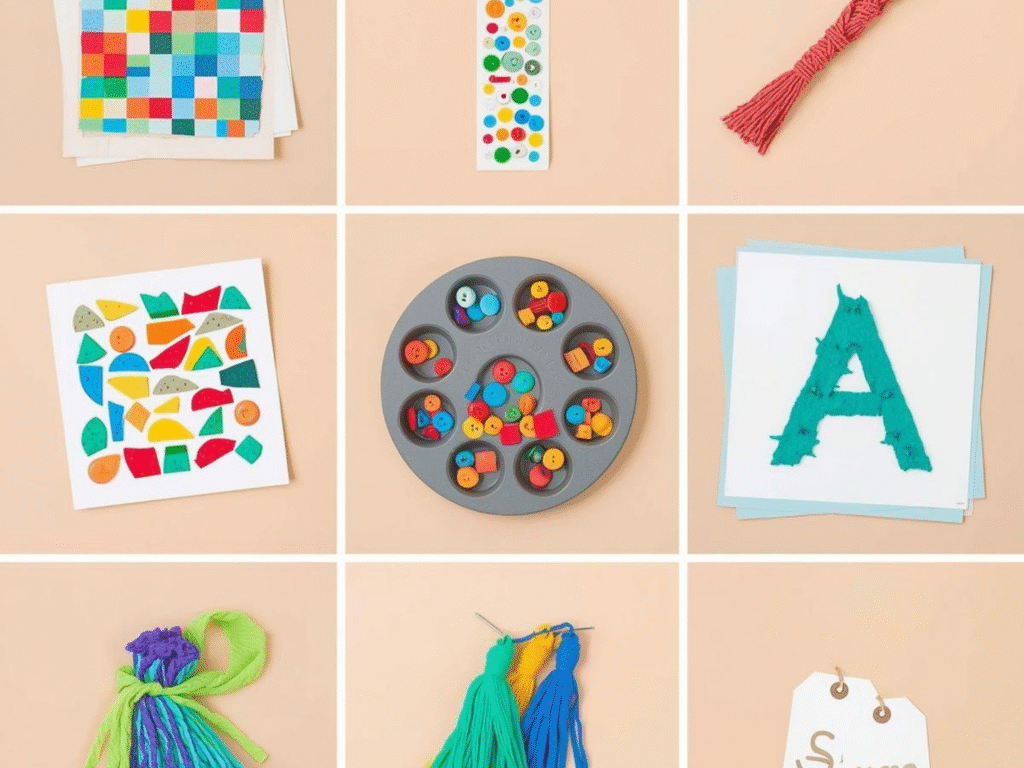
These craft ideas for children use low mess supplies and match many sewing tasks.
- Paper quilt collage from cut paper squares.
- Foam sticker bookmarks.
- Bead stringing with chunky cord.
- Button sorting and gluing onto cardboard shapes.
- Fabric scrap mosaics on cardstock with glue stick.
- Yarn wrapping around cardboard letters.
- Simple tassels with leftover yarn.
- Felt shape sewing with plastic needle and pre-punched holes.
- Stamped gift tags using ink pads and foam stamps.
- Tissue paper flowers. For a step-by-step, see this easy guide to tissue paper flowers
Upcycle what you already have
You do not need fancy supplies. Save cereal boxes, tubes, and clean jars. Turn them into organizers, puppets, and sorting games. PBS Parents has a big list of upcycled activities that are fun for both little kids and big kids.
Make it truly family crafting
Sometimes a spouse or partner gets curious when they see you making things. Invite them in. Give a simple role that fits the moment. One adult can cut while the other reads steps out loud. One can iron seams while the other pins. If your partner prefers not to craft, ask them to be the “studio DJ” and pick music or set a 20 minute timer. Small roles turn a solo hobby into family crafting time.
When you need quiet focus
There will be times when you need to sew a straight seam without help. Here are gentle ways to keep kids happy while you focus.
- Set up a “busy bin” that only comes out during sewing time. Include stickers, coloring pages, felt boards, or a new puzzle.
- Offer a short video tied to art or science and invite kids to draw what they learned after.
- Use a kitchen timer. Tell your child you will check in when the bell rings.
- Give a “helper job” they can do alone, like sorting buttons by size, counting fabric clips, or putting colored pencils back in rainbow order.
Safety and sanity in two minutes
Do a quick check before you start.
- Sharp tools out of reach.
- Iron unplugged until you are ready.
- Tiny parts for older kids only.
- Clear path around your chair.
Keep language positive. Notice what your child does well. “I see how carefully you lined up those sticker dots.” NAEYC suggests noticing the process instead of judging the final look. This builds confidence and joy.
Sample 30 minute plan
- Minute 0 to 5: Set up your station and your child’s tray.
- Minute 5 to 20: Work side by side using the mirror method. Talk about what you are doing. “I am measuring this strip. Can you measure your ribbon too”
- Minute 20 to 25: Show and tell. Each person shares one thing they made.
- Minute 25 to 30: Two minute tidy. Everyone puts supplies back in the bin.
Repeat this plan two or three times a week. Small pockets keep momentum without stress.
Tools to help you start today
If you want printable helpers, visit our site. Grab the free planners and checklists on Trusti ASG to set up your kid craft corner and plan short sessions. For more beginner tips, browse the Trusti ASG Blog for time saving steps, small space setups, and budget friendly supply lists.
Free Crafting With Kids Planner
Download the free, easy-to-use template in the link below to make life a little easier for you as you start your fast crafting journey:
Final thoughts
You do not have to wait for a perfect quiet house. You can make art in the life you have now. With a kid craft corner, the mirror my project method, and a short plan, kids crafting becomes part of your normal day. You protect your time, your child feels included, and your home fills with simple, happy projects. This is family crafting at its best. Start small. Keep it kind. Your creativity matters, and so does theirs. When you choose crafting with kids, you share a hobby, build skills, and make memories that last.

